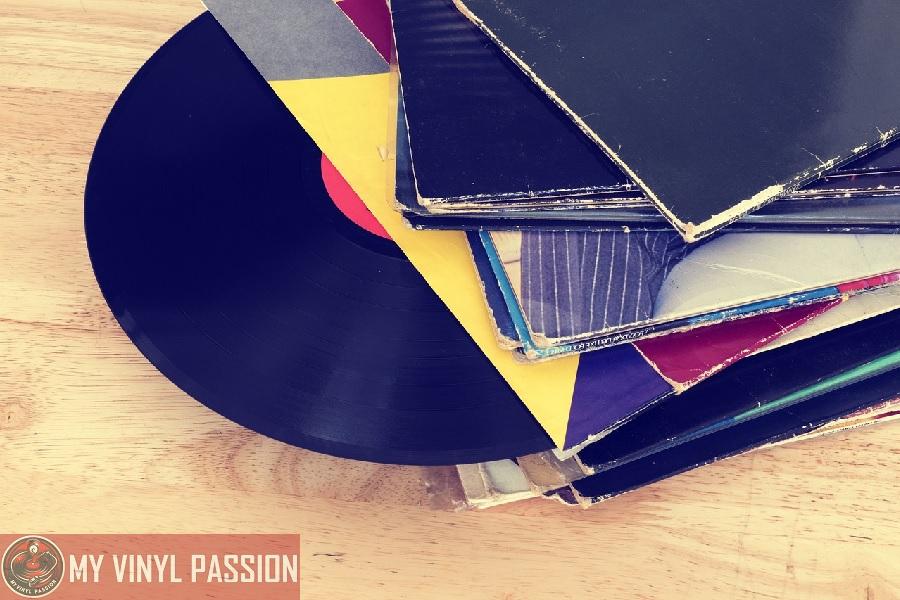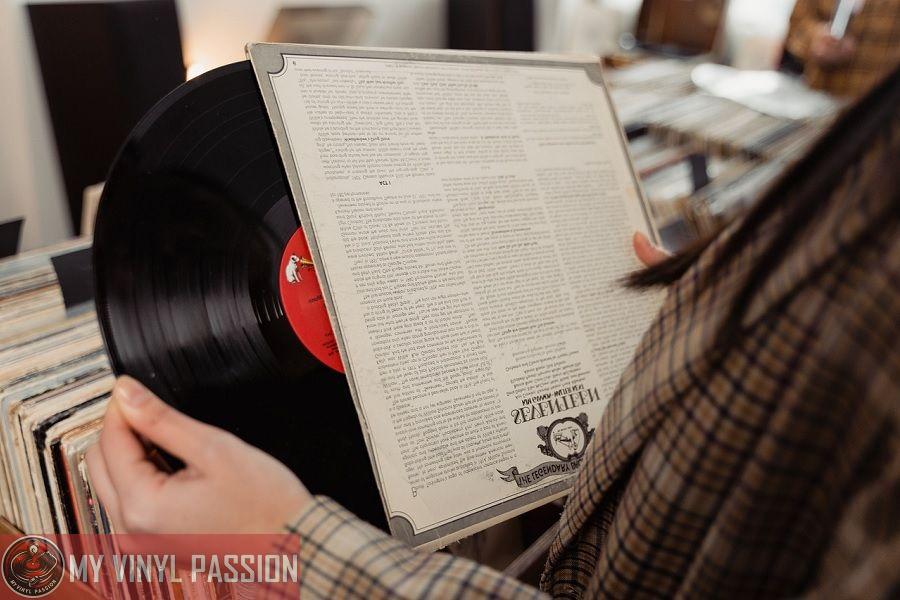Understanding the physical dimensions of vinyl records is essential as these characteristics influence both their storage requirements and playback experience.
Standard vinyl records are commonly found in three sizes: 7 inches, 10 inches, and 12 inches, which correspond to single, EP, and LP formats, respectively.
The circumference of these records directly relates to their capacity for music; for instance, a 12-inch record can hold more music than a 7-inch one.
In Summary
Standard Sizes: Vinyl records typically come in three sizes: 7 inches, 10 inches, and 12 inches in diameter, corresponding to different types of recordings.
Groove Width: The grooves on a vinyl record are about 0.04 to 0.08 millimeters wide, allowing for the intricate detail required for high-quality sound reproduction.
Thickness and Weight: Standard records are usually about 120 to 180 grams in weight, with some audiophile records being thicker and heavier, up to 200 grams or more.
Playback Speeds: The size of a vinyl record often correlates with its playback speed, which are 33 1/3 RPM for 12-inch LPs, 45 RPM for 7-inch singles, and 78 RPM for older 10-inch records.
The thickness and weight of vinyl can also vary. Traditionally, records were pressed on relatively thin vinyl, but modern audiophile pressings often use thicker, heavier vinyl in an effort to reduce vibration and improve sound quality.
These physical traits, along with the speed at which a record spins—either 33 1/3, 45, or 78 revolutions per minute (RPM)—are critical to how the music etched into its grooves is interpreted by a turntable and amplified into the sounds you hear.
Vinyl records not only possess the functional aspect of music playback but also hold aesthetic and cultural value, often reflected in the scaled-up visual artwork that adorns record sleeves.
The size of a record can affect its collectability and the way it is displayed, acting as a visual as well as an auditory medium.
History of Vinyl Records
In your exploration of vinyl records, you’ll uncover their transformation over time, including changes in sizes and speeds, as well as material innovations that set industry benchmarks.
The Evolution of Sizes and Speeds
Initially, you had the 78 rpm records, which were the industry standard for the phonograph record until the mid-20th century.
These discs were typically made from shellac and spanned a variety of sizes, with the most common being 10 inches for popular singles and up to 12 inches for classical pieces.
In the 1950s, a significant change occurred when RCA Victor introduced the 45 rpm, a 7-inch record intended for singles, which allowed listeners to enjoy a single song without the need to flip through a larger album.
Following closely, the 33 1/3 rpm record emerged from Columbia Records, which was a 12-inch vinyl suitable for albums.
This format could hold more music and offered better sound quality, leading to its dominance in the music industry for albums. The move from the shellac to vinyl records also allowed for improved durability and fidelity.
Material Advances and Industry Standards
Throughout the 1930s and beyond, the material used for records shifted from the brittle shellac of the 78s to the more flexible vinyl, which could absorb more vibration without breaking.
This transition was facilitated by the introduction of the acetate disc, which offered a medium for test pressings before the final vinyl records were produced.
Vinyl records have been part of an evolving lineage of materials aimed at improving the listener’s experience. With the advent of vinyl, records didn’t just sound better; they became a cultural icon due to the material’s adaptability and quality.
As the record sizes and materials evolved, so did vinyl record dimensions as they became standardized to accommodate the needs of the music industry and the equipment used by consumers.
Remember that each advancement in the history of vinyl records was a response to the demands of quality, durability, and the ever-expanding universe of music enthusiasts like you.
Physical Characteristics of Vinyl Records
Vinyl records are known for their distinct physical attributes, such as diameter and weight, which contribute to their acoustic properties and collector appeal.
Standard Dimensions and Formats
Your collection of vinyl records can include several sizes, with the standard diameters being the 12-inch, 10-inch, and 7-inch records.
The 12-inch albums, commonly known as LPs (Long Play), typically contain a full album. LPs are designed to play at a speed of 33 1/3 rotations per minute (RPM). Singles, often found in the 7-inch format, are played at 45 RPM and typically hold one song per side.
EPs (Extended Play), which contain more music than a single but less than an LP, can be either 7-inch or 10-inch and play at various speeds, although commonly at 33 1/3 RPM or 45 RPM.
- 12-inch records (LPs): Standard LP size, plays at 33 1/3 RPM
- 10-inch records: Often EPs, can play at 33 1/3 RPM or 45 RPM
- 7-inch records: Typically singles, play at 45 RPM
Understanding Record Weight
When discussing record weights, you’ll often encounter standard records as well as 180-gram vinyl editions.
The weight of a vinyl record is indicative of its quality and durability; the heavier it is, the less prone it is to warping over time. 180-gram vinyl records are thicker and heavier, providing a more stable platform for the stylus to track, potentially leading to improved sound quality.
Standard LPs may weigh less and can vary in thickness, but most modern vinyl is pressed on weights that enhance the listening experience.
- Standard LP weight: Varies, lighter than 180-gram editions
- 180-gram vinyl: Heavier, thicker, thought to provide better sound quality and durability
Understanding Record Grooves and Playback
Vinyl records are defined by the meticulous nature of their grooves and the specific speeds at which they are played back. These attributes are key to the audio fidelity and listening experience you receive from your records.
Groove Specifications
The grooves on a vinyl record are microscopically etched lines that spiral from the outside edge to the center. Groove patterns are vibrations that represent sound waves, and the stylus — or needle — of a turntable vibrates in correspondence to these to produce sound.
Typically, grooves are around 0.04-0.08 millimeters wide, based on the audio content’s loudness and dynamic range. The depth and width of the grooves can drastically dictate the audio quality of the vinyl record.
Speed and Playback Considerations
Vinyl records come in different sizes and are commonly associated with specific playback speeds, measured in revolutions per minute (rpm). There are mainly two speeds you’ll encounter:
- 45 rpm: This speed is standard for 7-inch records, which usually contain a single song per side.
- 78 rpm: Historically used for 10-inch records made of shellac, known for lower audio fidelity than modern vinyl records.
Your turntable must be set to the correct speed to ensure accurate audio fidelity.
Playing a vinyl record at the wrong speed can lead to changes in pitch and tempo. High-quality turntables allow you to switch between these speeds to accommodate different record formats.
The interaction between the stylus and record grooves is delicate, and any misalignment can cause audio distortion or damage the grooves. Keep in mind that a properly calibrated turntable is crucial for maintaining the integrity of your vinyl and achieving the best sound reproduction.
Maintaining Vinyl Record Quality
To ensure your vinyl records preserve their pristine sound quality and physical condition, you must adopt meticulous handling and storage practices. This care is crucial because vinyl records are fragile and easily susceptible to damage that can degrade their performance.
Handling and Storage Best Practices
When handling your records, always hold them by the edges or the label, avoiding contact with the grooved surface to prevent the transfer of oils and dirt from your fingers.
Use record sleeves made of polyethylene rather than PVC to keep the records clean and protect them from scratches.
Proper Handling:
- Do not touch the grooved surface
- Hold by the edges or label
Storage:
- Keep records upright in a cool, dry place
- Use polyethylene sleeves for additional protection
For storage solutions, opt for a sturdy vinyl record stand or shelf that provides vertical support. Ensure the environment is stable, away from direct sunlight or heat sources to avoid warping.
Protection from Warping and Dust
Warping can compromise the sound quality and playability of your records.
To prevent warp, ensure that your albums are stored vertically and that they are not leaning, which can put uneven pressure on the disc. Additionally, do not stack records as the weight can cause warping over time.
- Preventing Warping:
- Store vertically to distribute pressure evenly
- Avoid stacking to prevent weight-induced warping
Dust accumulation can result in unwanted noise and may also lead to scratching. Protective album sleeves and record covers are essential in keeping dust particles away from the grooved surface.
- Dust Protection:
- Keep records in their album sleeve when not in use
- Consider outer record covers for extra protection
Comparing Vinyl Records with Other Formats
In assessing the distinctions between vinyl records and their digital counterparts, you’ll discover a juxtaposition not only in physical dimensions but also in how they are experienced in modern music culture.
Vinyl vs Digital Formats
You are likely familiar with the tactile allure of vinyl records — they are larger than CDs, usually measuring 12 inches in diameter for LPs and 7 inches for singles. This size contributes to vinyl’s robust physical presence which is absent in digital formats like MP3s and CDs.
While a typical CD has a diameter of 4.7 inches, it’s also important to consider the average archive size. An MP3 file can be just a few megabytes, varying based on bitrate and length, whereas the vinyl analog format doesn’t compress audio, potentially providing richer sound details.
In terms of portability, digital formats undoubtedly win.
They can be easily stored on various devices, transferred with minimal effort, and involve no physical space. Music enthusiasts might argue, though, that vinyl offers an unmatched tactile and visual experience which digital formats lack.
Vinyl Records in Today’s Music Scene
Amidst music enthusiasts, vinyl has seen a resurgence and retains a popularity that taps into a sense of nostalgia and a craving for physical media.
Digital formats reign supreme in the realm of convenience and accessibility, but vinyl holds a special place due to its unique dimensions and the ceremonial nature of record playing.
Your music library can span thousands of digital songs on a device the size of a palm, yet the act of flipping through a crate of records provides an interactive experience that digital can’t replicate.
Despite the vast sea of digital options, vinyl records have carved out their space in today’s scene, providing not just sound, but a full-sensory recollection of music as both art and artifact.
FAQs
What are the standard sizes of vinyl records?
Vinyl records typically come in three standard sizes: 7 inches (often singles), 10 inches (usually older records or special editions), and 12 inches (common for LPs or albums).
How does the size of a vinyl record affect its playback time?
The size of a vinyl record generally correlates with its capacity: a 7-inch record holds about 5 minutes per side, a 10-inch record around 12-15 minutes per side, and a 12-inch record can hold up to 22 minutes per side, depending on the recording’s quality and speed.
What are the different playback speeds for vinyl records, and how are they related to record size?
The playback speeds for vinyl records are 33 1/3 RPM (revolutions per minute) for 12-inch LPs, 45 RPM for 7-inch singles, and 78 RPM for older 10-inch records. The speed is chosen based on the record’s diameter and intended use.
Are there different thicknesses and weights for vinyl records?
Yes, standard vinyl records typically weigh between 120 to 180 grams. Audiophile editions may be heavier, up to 200 grams or more, offering potentially better sound quality due to their stability and durability.
Can the groove width on a vinyl record vary, and how does it affect sound quality?
The groove width on a vinyl record can vary slightly, typically between 0.04 to 0.08 millimeters. Wider grooves can allow for a higher volume and potentially better sound quality, but they also take up more space, reducing the amount of music that can fit on the record.





